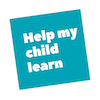What Makes Your Kid Squirmy? It Might be Proprioception
Every parent of a preschooler or grammar schooler has seen squirmy kids. They never stop. They certainly can’t sit still, and even if watched by the teacher, will manage to tap their feet or flail out with their arms. Standing in line is hopeless, as they tickle their neighbors, shift from foot to foot, and elbow the children to their right and left.
So what causes this behavior?
Most people would probably say ADHD, and sometimes that’s the case. But for younger children, there’s also something developmental going on, and more people should know about it.
![]()
Proprioception
Proprioception is a child’s ability to know where his or her body is in space. A child is not born with this ability. It’s one of the neurological systems that develops as a child matures.
Here’s a great video explaining proprioception from the people at Brain Highways
One way of describing how proprioception develops is to say that, in the first 7 years of life, a child’s mind uses the location of pressure receptors within the muscles, tendons, and joints of the child’s entire body to create a map of where the body is in space. This map is made as a child develops their proprioceptive system.
A child with a mature proprioceptive system can kick a ball without looking at it and touch your finger and then their nose. A brain with mature proprioception knows where the body is, even if a child’s eyes are closed.
![]()
Proprioception is Linked with Sitting Still and Paying Attention
According to Susan Johnson, M.D., F.A.A.P. an immature proprioceptive system is often linked to a child’s ability to sit still and pay attention.
Dr. Johnson says that the brain needs to know where the body is at all times. Before the proprioceptive system matures, conscious parts of the brain work to monitor where the body is, but after the proprioceptive system develops, monitoring the body’s location and movement becomes automatic.
One of the easiest ways for the brain to keep track of body location is to move the body. That’s why it’s so difficult for some young children to sit still. When they sit still, their brain starts to look for body location — and starts moving the body to help find everything.
Watch the squirmy children in your life. Can they focus better when they’re allowed to move their body a little bit? Janice tried this and had to laugh. “My son listened best when he was upside down, waggling his feet!”
Many wise teachers know this phenomenon, even if they don’t fully understand proprioception
![]()
How to Help a Child Succeed in the Classroom
One trick is to take a Therapeutic band, and tie it around the front two legs of a chair. A child can bounce their legs off of the band —locating their body—while looking at the blackboard and paying attention to the teacher.
Diagnosing Proprioceptive Problems
If this post describes your child, realize that many children are diagnosed as having ADHD when in reality, they have immature sensory systems. If you suspect that your child may have proprioceptive problems, you want to talk with a pediatric occupational therapist.
CLICK to read about looking at the whole child before diagnosing ADHD.
CLICK to take a look at a sensory processing disorder diagnosis. An immature proprioceptive system is part of that diagnosis.
![]()
Helping the Proprioceptive System Develop
Some of the best ways to develop the proprioceptive system involve crashing into things and really working the body. Remember: your child is using the location of pressure receptors within the muscles, tendons, and joints of the child’s entire body to create a map of where the body is in space.
This means that movements like jumping into a beanbag, rolling down a hill, carrying heavy boxes or weights, are a big help. Here are more movements from Pinterest.
Here’s a list of sensory strategies that help a child with immature proprioception in the classroom.
And here are some great sensory ideas to help if your child squirms while doing homework.
Finally, many children who have immature sensory systems or immature neurological systems are in a state of fight or flight—a reactive, alarmed response. Children with immature proprioceptive systems often have trouble sleeping. When they close their eyes and stop moving, their brain starts looking for their body. Compression sheets can help.
Sometimes, these children find that wearing weighted clothing can help them calm down and sit quietly in school. Weighted clothing provides added sensory stimulation, which helps proprioception. CLICK here for our page describing weighted clothing.










Pingback: Weighted and Compression Clothing Can Calm Your Child - Help My Child Learn
Pingback: Handwriting and Focus: From Form Drawing to Handwriting Therapy - Help My Child Learn